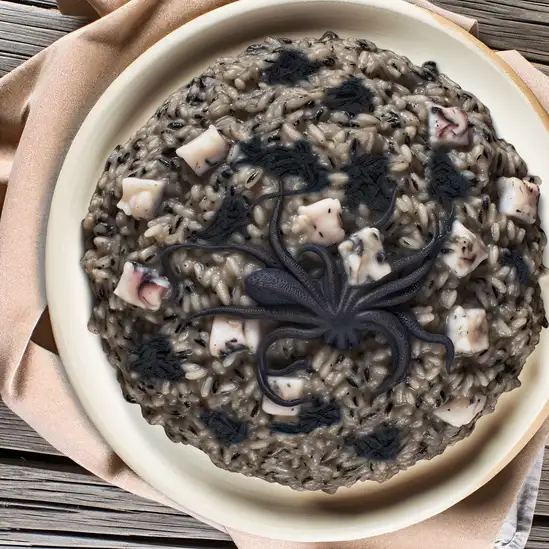



Imagine stepping onto a stretch of golden sand that feels warm beneath your feet,with the gentle Adriatic breeze carrying the salty tang of the sea and the distant laughter of families enjoying their day. That’s Lignano Sabbiadoro for you—a lively coastal town where the rhythm of the waves sets the pace for a perfectly relaxed yet vibrant escape. It’s the kind of place where mornings start with the aroma of fresh espresso mingling with the scent of blooming flowers from nearby gardens,and evenings glow with the soft light of seaside cafes buzzing with friendly chatter. What makes Lignano special is its effortless blend of natural beauty and welcoming spirit. The town stretches along a long peninsula,offering miles of sandy beaches framed by pine forests that invite you to wander or bike through shaded trails. You’ll find locals and visitors alike savoring gelato while strolling the lively promenade,or sharing plates of seafood so fresh it practically tastes like the ocean itself—think tender calamari,briny clams,and the catch of the day grilled to perfection. Beyond the beach,there’s a genuine warmth in the town’s character. It’s not just a place to visit but a place to feel at home,where the pace slows just enough for you to soak in the simple pleasures:the splash of waves,the clink of glasses at sunset,and the soft hum of Italian conversations drifting through the air. If you’re craving a spot that’s both energizing and soothing,Lignano Sabbiadoro quietly invites you to linger a little longer.
The information on this page is currently being reviewed by Tripkliq and should be used as a guide only
Eng word: Hello
Eng pronunciation: chow
Local language: Ciao
Eng word: Goodbye
Eng pronunciation: ah-ree-veh-DEHR-chee
Local language: Arrivederci
Eng word: Thank you
Eng pronunciation: GRAH-tsee-eh
Local language: Grazie
Eng word: How much
Eng pronunciation: KWAN-toh KOH-stah
Local language: Quanto costa
Eng word: Toilet
Eng pronunciation: BAHN-yo
Local language: Bagno
Eng word: Help me
Eng pronunciation: ah-YOO-tah-mee
Local language: Aiutami
Eng word: Yes
Eng pronunciation: see
Local language: Sì
Eng word: No
Eng pronunciation: noh
Local language: No
Eng word: Excuse me
Eng pronunciation: SKOO-zee
Local language: Scusi
Lignano Sabbiadoro was officially founded in the early 20th century, with its development as a tourist destination beginning in the 1920s. The area was initially a small fishing village before transforming into a popular seaside resort.
The name 'Sabbiadoro' translates to 'Golden Sand,' reflecting the beautiful, golden sandy beaches that the city is famous for. This name was adopted in 1935 to highlight the area's natural beauty and attract more tourists.
During World War II, Lignano Sabbiadoro was relatively untouched by the conflict, allowing it to quickly resume its development as a tourist destination in the post-war years. This period saw significant growth in infrastructure and amenities.
Opened in the 1970s, Marina Punta Faro is one of the largest and most modern marinas in Europe. It has played a crucial role in attracting boating and yachting enthusiasts to Lignano Sabbiadoro.
The famous American author Ernest Hemingway visited Lignano Sabbiadoro in the 1950s. He was captivated by the area's charm and even mentioned it in his writings, contributing to its international allure.
Built in the 1970s, the Terrazza a Mare is an iconic structure in Lignano Sabbiadoro. It serves as a multi-functional space with shops, restaurants, and panoramic views of the Adriatic Sea, symbolizing the city's modern architectural spirit.
Lignano Sabbiadoro is known for its vibrant beach events, including the annual Beach Arena sports and music festivals. These events have become a significant part of the city's cultural and social life, attracting visitors from all over the world.
The city is home to several natural reserves, such as the Marano Lagoon and the River Stella Reserve. These areas are rich in biodiversity and offer tourists a chance to explore the natural beauty and wildlife of the region.
Opened in the 1980s, Aquasplash is one of Italy's first water parks. It has become a major attraction for families visiting Lignano Sabbiadoro, offering a variety of water slides and pools.
In Lignano Sabbiadoro, the most common Power Adaptor is Type C, Type F.



A classic Italian dessert made with layers of coffee-soaked ladyfingers and a rich mascarpone cheese mixture, dusted with cocoa powder.

A traditional Venetian dish featuring marinated sardines, typically prepared with onions, pine nuts, and raisins, offering a sweet and sour flavor.

A flavorful risotto made with cuttlefish and its ink, giving it a distinctive black color and rich seafood flavor.

A staple dish in the region, polenta is made from cornmeal and can be served creamy or allowed to set and then sliced, often paired with various sauces or meats.

A mixed fried seafood dish, typically including shrimp, calamari, and small fish, served with lemon and often accompanied by a side of tartar sauce.
Imagine stepping into a city where every corner feels like a scene from a timeless painting—Venice is exactly that kind of place. The moment you arrive,the gentle lapping of water against ancient stone buildings wraps around you like a soft melody. Instead of streets,there are winding canals,and instead of cars,gondolas glide silently beneath ornate bridges,their oars dipping rhythmically into the emerald water. The air carries a mix of salty sea breeze and the faint aroma of fresh espresso and baked pastries from nearby cafés,inviting you to slow down and savor the moment.
Venice has this magical,almost dreamlike quality. The light here is different—soft and golden in the mornings,casting long shadows on the labyrinth of narrow alleys and colorful facades. You’ll find yourself wandering without a map,getting delightfully lost among the bustling markets,where vendors call out in melodic Italian,selling everything from fresh seafood to vibrant Murano glass. The city’s rich history whispers from every corner,from the grandeur of St. Mark’s Basilica to the quiet charm of tucked-away piazzas where locals sip wine and chat as if time has paused.
What makes Venice truly unforgettable is its rhythm—slow,intimate,and deeply human. It’s a place where you can hear the laughter of children playing by the water,the clinking of glasses in cozy trattorias,and the soft hum of a street musician’s violin. Visiting Venice isn’t just about seeing a city; it’s about feeling its heartbeat,tasting its flavors,and becoming part of its endless story.
If you ever find yourself wandering through Trieste,you’ll immediately notice its unique blend of old-world charm and cosmopolitan flair. The city feels like a crossroads where the Mediterranean meets Central Europe,and that mix is everywhere—from the elegant Austro-Hungarian architecture lining the waterfront to the lively cafés where locals sip strong espresso while chatting animatedly. There’s a gentle sea breeze carrying the salty tang of the Adriatic,mingling with the rich aroma of freshly baked pastries and roasted coffee beans. It’s a place that invites you to slow down and savor the moment.
Walking along the Piazza Unità d’Italia,you’ll hear the soft murmur of waves against the harbor,punctuated by the distant call of seagulls and the clinking of glasses from nearby terraces. The city’s history whispers through its narrow streets and grand squares,but it’s the warmth of the people that truly makes Trieste special. They’re proud of their city’s layered identity—Italian,Slovenian,Austrian—and it shows in the food,the language,and the festivals that celebrate this rich tapestry.
Don’t miss trying a slice of the local favorite,jota—a hearty bean and sauerkraut stew that tastes like a comforting hug on a chilly day. And if you’re a book lover,the city’s literary past,with figures like James Joyce having called it home,adds an extra layer of magic. Trieste isn’t just a place to visit; it’s a place to feel,to breathe in,and to carry with you long after you’ve left.
If you ever find yourself wandering through the sun-drenched streets of Dubrovnik,you’ll immediately feel like you’ve stepped into a living storybook. The city’s ancient stone walls rise proudly against the sparkling Adriatic,and as you stroll along the marble-paved Stradun,the salty sea breeze mingles with the scent of fresh pine and blooming bougainvillea. There’s a rhythm here—a gentle hum of life where history and modern charm dance together effortlessly.
Dubrovnik’s character is woven into every corner:the clatter of café cups,the murmur of locals chatting in cozy taverns,and the distant call of seagulls overhead. You can almost taste the city in the air—briny and fresh,with hints of grilled seafood and ripe figs from the markets. Sitting at a seaside restaurant,watching the sun dip behind the fortress walls,you’ll savor dishes bursting with Mediterranean flavors,paired with a glass of crisp Croatian white wine.
What makes Dubrovnik truly special is how it balances its rich past with a vibrant present. The city’s narrow alleys invite exploration,revealing tucked-away galleries,artisan shops,and lively squares where music spills out into the streets. Whether you’re tracing the footsteps of ancient mariners or simply soaking up the golden light on a quiet terrace,Dubrovnik feels like a warm embrace—inviting,timeless,and utterly unforgettable.
If you ever find yourself wandering through Split,it’s like stepping into a living,breathing storybook where ancient history and vibrant modern life dance together effortlessly. The moment you stroll along the Riva promenade,the salty breeze from the Adriatic mingles with the aroma of fresh espresso and grilled seafood wafting from nearby cafés. Locals chat animatedly in the sun-dappled squares,their laughter blending with the distant hum of boats bobbing gently in the harbor. There’s a laid-back energy here that feels both timeless and alive,inviting you to slow down and soak it all in.
Split’s heart beats strongest in Diocletian’s Palace,a sprawling Roman fortress that’s less a museum and more a neighborhood where people live,shop,and gather. Walking through its ancient stone alleys,you’ll catch glimpses of colorful markets,artisan shops,and cozy taverns tucked into centuries-old walls. At night,the city transforms as lanterns flicker on,and the sound of live klapa singing—traditional a cappella harmonies—drifts through the air,wrapping you in a warm,soulful embrace.
What really makes Split unforgettable is how effortlessly it blends the old with the new. You can savor a plate of fresh octopus salad while watching fishermen haul in their catch,then wander to a rooftop bar for a cocktail as the sun sets behind the islands. It’s a place where every corner tells a story,every meal feels like a celebration,and every moment invites you to become part of its ongoing tale.
Florence feels like stepping into a living masterpiece. The moment you wander through its cobblestone streets,you’re wrapped in a warm embrace of history and art that’s impossible to ignore. Everywhere you look,grand Renaissance palaces and churches rise against the sky,their terracotta roofs glowing softly in the afternoon sun. The air carries a mix of fresh espresso,baked bread,and the faint scent of leather from the bustling markets. It’s a city that hums with quiet energy—artists sketching by the Arno River,locals chatting animatedly over glasses of Chianti,and the distant melody of street musicians weaving through piazzas.
What makes Florence truly special is its soul. It’s not just about the famous Duomo or the Uffizi’s priceless art; it’s the way the city invites you to slow down and savor every moment. Sit at a tiny café,sip a rich cappuccino,and watch the world drift by. Taste the creamy gelato that melts on your tongue,or indulge in a plate of fresh pasta that tastes like it was made just for you. The people here carry a deep pride in their heritage,and their warmth makes you feel like you’re part of a timeless story.
At sunset,the city transforms. The golden light softens the stone buildings,and the Arno reflects a palette of pinks and purples. Walking across the Ponte Vecchio,with its quaint shops and twinkling lights,you realize Florence isn’t just a place to visit—it’s a feeling you carry with you long after you leave.
Naples feels like stepping into a living,breathing storybook where every street corner hums with life and history. The city’s energy is raw and unfiltered—imagine narrow alleys bursting with the aroma of fresh espresso and wood-fired pizza,while the chatter of locals spills out from bustling cafés. It’s a place where the past and present collide beautifully:ancient ruins nestle beside vibrant markets,and baroque churches stand tall amid colorful,graffiti-splashed walls. Walking through Naples,you can almost taste the city’s soul in the salty sea breeze mingling with the scent of basil and ripe tomatoes.
What really grabs you is Naples’ character—bold,unapologetic,and fiercely proud. The people here have a warmth that’s instantly welcoming,whether they’re sharing stories over a slice of the world’s best Margherita pizza or guiding you to a tucked-away viewpoint overlooking the shimmering Bay of Naples. The city’s soundtrack is a lively mix of street musicians,church bells,and the occasional honk of scooters weaving through traffic,creating a rhythm that’s uniquely Neapolitan.
And then there’s the food—oh,the food! It’s not just a meal; it’s a celebration. From the first bite of a perfectly blistered pizza to the sweet,creamy delight of sfogliatella,every flavor tells a story. Naples invites you to slow down,savor the moment,and dive headfirst into its vibrant culture. Trust me,once you’ve wandered its streets and tasted its flavors,Naples stays with you long after you leave.
Scammers may install skimming devices on ATMs to steal card information from unsuspecting tourists.
Street vendors may sell fake designer goods or counterfeit items at inflated prices, claiming they are authentic.
Scammers may pose as charity workers, asking for donations for fake causes or organizations.
Scammers pose as parking attendants and charge tourists for parking in free or public parking areas.
Unlicensed individuals may offer guided tours or excursions, providing subpar experiences or disappearing after payment.
Some vendors may overcharge tourists for sunbeds, umbrellas, or other beach equipment, especially if prices are not clearly displayed.
Crowded areas, such as beaches, markets, or festivals, are hotspots for pickpockets targeting tourists' wallets, phones, and valuables.
Some restaurants may add hidden fees or inflate bills, especially if tourists do not carefully review the menu or receipt.
Tourists may be lured into street games or gambling setups that are rigged to ensure they lose money.
Some taxi drivers may take longer routes or fail to use the meter to overcharge tourists unfamiliar with the area.
Italy has strict laws regarding the possession, use, and trafficking of illegal drugs. Possession of small amounts for personal use may result in administrative penalties such as fines and the suspension of personal documents (e.g., driver's license). However, possession of larger quantities or trafficking can lead to severe criminal penalties, including imprisonment. Tourists should avoid any involvement with illegal drugs to prevent legal issues.
In Lignano Sabbiadoro, as in the rest of Italy, smoking is prohibited in enclosed public spaces such as restaurants, bars, and public transportation. Additionally, smoking is banned in certain outdoor areas like playgrounds and sports facilities. Some beaches may also have designated non-smoking areas. Violations can result in fines.
Vaping is subject to similar regulations as smoking in Lignano Sabbiadoro. It is prohibited in enclosed public spaces and may also be restricted in certain outdoor areas. Tourists should look for signs indicating vaping restrictions and adhere to local rules to avoid fines.
What are other people saying about Lignano Sabbiadoro?
Recent Social posts about Lignano Sabbiadoro
There is nothing to show you for now.